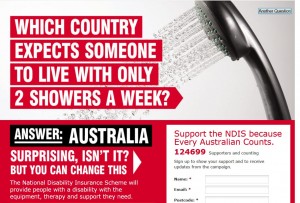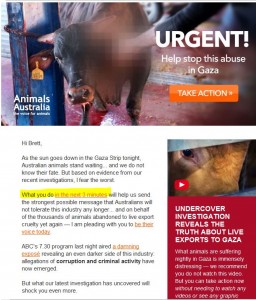A few recent nonprofit marketing campaigns have given us pause to consider: is it best to gain attention even if it means losing a few delicate souls? Or is it wiser to tread carefully and continue to gently court favour from your audiences?
Both approaches have merit, though the conservative approach is in the overwhelming majority. Why? Because people in charge are terrified of offending people. They don’t want to stand out, make enemies or create headaches. Courage in the nonprofit marketing world is in short supply. Those in charge shy away from approaches deemed too intense, confronting, high-falutin or divisive.
The good folk at UK’s Pilion Trust are made of sterner stuff and partnered with mega-global communications giant Publicis to create a video destined for controversy – and lots of free media coverage.
Faced with typical nonprofit marketing restrictions; small budget, unsexy cause, no celebrity support and a crowded marketplace, Pilion Trust flicked the switch to ‘shock’ with its F#$@ the Poor video. Behind the swearing is a clever concept or premise: people offended by bigotry towards the poor; who claim to advocate for them; who challenge the sign-wearer were also very slow to lend financial assistance when politely asked. In other words – talk is cheap; put your money where your mouth is.
Were people offended when the video was released. Yep. But who cares? As Savvas Panas, the chief executive of the Pilion Trust, said: “We understand that some may be shocked by this footage. We are more offended however, that people across the United Kingdom are living in adverse
The Every Australian Counts campaign didn’t hold back when it released this message via social media and beyond. No swearing, but no punches pulled either.
Some thoughts on a good campaign:
1. No attention = no impact. It’s that simple – if you don’t grab the attention of all those busy, bored, self-interested, Facebooking, fast-food dining, tired and dispassionate souls out there you will stand no chance to win them over with your carefully crafted messaging and heart-lifting imagery. Of course impact needn’t be created by hard-hitting approaches. Humour and absurdity make an impact too – though it’s far harder to get right.
2. Hard-hitting / high concept campaigns get to more people via the media coverage they inspire, than via the channels of the actual campaign. That’s a HUGE boost to your bottom line and campaign reach. How much is a page 8 pic and story worth to you? What if the coverage is similar to that given to Save the Children UK’s latest (stupendous) effort?
3. You win some, you lose some. Any true supporter will overlook their offence. Those who sever ties over some offensive word, nudity or an approach weren’t real supporters to begin with. Your chief concern should be igniting the supporter base which will otherwise sit dormant. Beyond that you want to pique the interest of new folk.
4. Put complaints in perspective. Nonprofits are v ery sensitive to criticism from stakeholders and the public. If you ever get the chance to unleash a campaign that is likely to cause a stir, have an understanding that a few negative comments is just that – a few negative comments. The I Wish I Had Breast Cancer campaign surely upset thousands.
5. Change hurts. Going from business-as-usual marketing to hard-hitting or confronting is not easy. The reason for your change in approach may have to be explained to your tried and trusted supporters, especially the V.I.Ps.
6. Consistency matters: A bad-assed campaign belongs to a bad-assed nonprofit. If you can’t deliver on the tone you set, don’t assume the tone. Animals Australia (below) hits hard but that’s exactly what we expect from them. BTW please spend 2m to support the campaign here.




